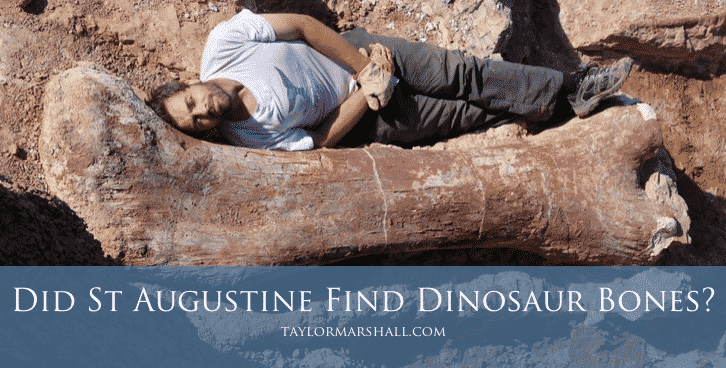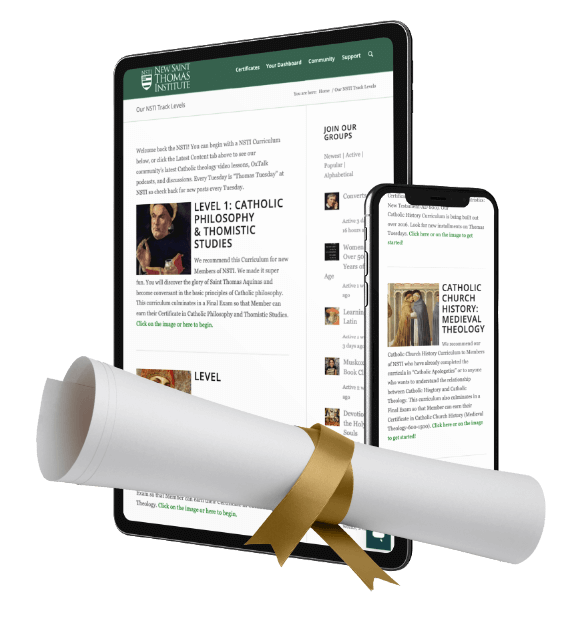Did St Augustine Find Dinosaur Bones?
Dinosaur bones, they say, were first discovered in 1676 by an Anglican clergyman named Reverend Robert Plot. He found a large femur and originally claimed it to be the thigh bone of a giant.

It seems that Anglican clergy had a knack for this kind of thing. Another Anglican clergyman named Reverend William Buckland discovered a dinosaur in 1824 that was later named after him: Megalosaurus Bucklandii. By 1841, the word “dinosaur” had been coined; a Greek word meaning terrible (deinos) and lizard (sauros). So were these the first finds?
Four years ago, when I was reading through Saint Augustine’s monumental work De Civitate Dei (The City of God), I noticed that Saint Augustine described what sounds like a dinosaur discovery – way back in the early 400s! In the follow passage, Saint Augustine describes how he and others have seen the large bones of giants:
and in which bones of incredible size have been found or have rolled out. I myself, along with some others, saw on the shore at Utica a man’s molar tooth of such a size, that if it were cut down into teeth such as we have, a hundred, I fancy, could have been made out of it. But that, I believe, belonged to some giant. For though the bodies of ordinary men were then larger than ours, the giants surpassed all in stature.” (De Civititate Dei, XV, 9.
Saint Augustine is talking about the size of humans before the flood. This belief refers back to Genesis 6:4:
The Nephilim (Greek: Gigantes) were on the earth in those days, and also afterward, when the sons of God came in to the daughters of men, and they bore children to them. Those were the mighty men who were of old, men of renown.”
[callout]By the way, these Nephilim are partially the inspiration for the confusing “rock monsters” in the 2014 film Noah.[/callout]
Saint Augustine goes on to say:
But, as I said, the bones which are from time to time discovered prove the size of the bodies of the ancients, and will do so to future ages, for they are slow to decay.”
Here Saint Augustine refers to fossilized bones which are “slow to decay.” There is no doubt that Augustine is describing fossilized remains of giant creatures. It’s doubtful that these creatures are the Nephilim. Nevertheless, it is interesting to see the great theologian of grace, Saint Augustine, interacting with archeological evidence!
[reminder]What do you think? Did Saint Augustine witness dinosaur bones?[/reminder]
[callout]Join over 14,000 email subscribers to this blog and get a free book Thomas Aquinas in 50 Pages by clicking here.[/callout]
Share this post with your friends on Facebook by clicking here.
What to Watch Next
SHOP THE TAYLOR MARSHALL STORE
Dive Deeper

GET CONFIDENT IN YOUR FAITH
Explore the fascinating world of Catholic teachings with Dr. Marshall. Together you’ll unpack the brilliant answers the Church gives to tough questions about the Faith. The best part: you go at your own pace. Start this exciting journey today.


 >
>


